Continuous improvement is an organized approach to identifying opportunities for improvement that can help an organization meet its goals for increasing profits, reducing costs, and accelerating innovation. Opportunities also enhance the quality of a product or service, improve safety, and result in happier customers, patients, and staff.
Opportunities for improvement exist in every company, in every job, in every workflow. Organizations that recognize this fact and engage their entire workforce in identifying those opportunities work to create a culture of continuous improvement. By engaging front-line workers in improvement efforts, organizations are able to improve on a more granular level than is visible to managers and senior leaders.
Continuous improvement software is used to capture opportunities for improvement from front-line staff in their daily work, as well as improvements that are a part of larger, strategic projects and rapid improvement events.
Whether they are part of top-down initiatives or bottom-up daily improvement, it's important that each be accelerated through the improvement cycle as quickly as possible. In this way, successful organizations are able to sustain momentum and increase engagement in continuous improvement.
Opportunities for Improvement Should:
- Align to Your Business Goals
It is the responsibility of your senior leaders to determine the overarching organizational goals, which managers and staff then work to achieve using continuous improvement. It's important that the opportunities for improvement that come up as a part of daily improvement align with these strategic goals, and that you have a way to show how this alignment contributed to organizational success. Larger projects and events (made up of individual improvements) also drive progress toward your business goals.
- Deliver Results
It is important that continuous improvement results in a measurable impact, thereby proving the value of an investment in improvement and engaging employees and leaders in future efforts. This means that key performance indicators for each target opportunity should be identified early so that the end result can be assessed. Examples of key performance indicators include reduced waste, lowered costs, enhanced customer satisfaction, improved safety, and upgraded product quality.
- Drive Innovation
Your continuous improvement program should bring new ideas to old ways of doing things. Sometimes a process can be tweaked to gain improvement, while other times a drastic change may be required. Continuous improvement opens the door to creativity that results in innovation.
The Lifecycle of an Improvement
KaiNexus customers achieve an over 80% implementation rate because their opportunities follow a clearly defined lifecycle that drives them through to completion:
-
The improvement is identified and submitted into KaiNexus using a computer, email, or the iOS app.
-
The appropriate leader is notified that the improvement is awaiting assignment.
-
The leader assigns it to someone to work on - usually the person who submitted the improvement. A team may be assembled at this point if necessary.
-
The improvement is evaluated, adjusted if necessary, and implemented.
-
A resolution is achieved and the impact is logged in KaiNexus
-
The resolution is shared with all interested people, and the team is recognized.
-
KaiNexus adds the OI to the history and cumulative metrics of the organization.
The Role of Improvement Software in Implementing Opportunities
Continuous improvement software makes it possible to capture, implement, measure, and share improvement from around the organization in a standardized, organized, efficient manner.
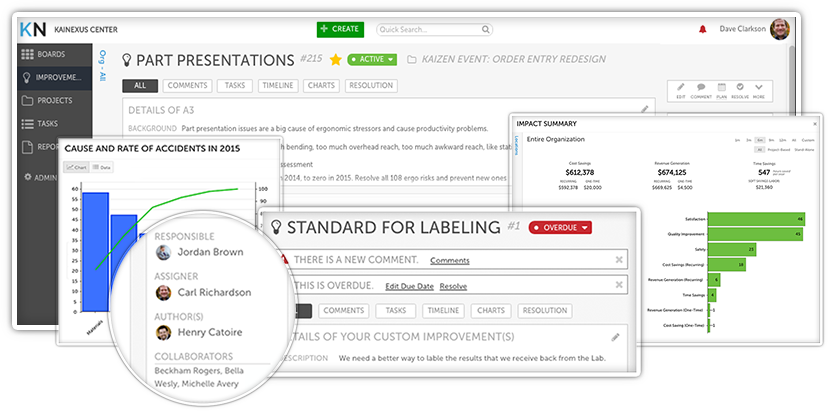
- Improvements and Projects
Continuous improvement software provides a standard way to capture opportunities of all sizes and scopes from across the organization, from small daily improvements and "Just Do Its" to those that contribute to strategic projects and rapid improvement events.
The structure of opportunities is customizable so that your organization can continue using the language that works for you, whether that's A3s, Hoshin Kanri, PDSA, Kaizen, or whatever else your organization practices. Putting all opportunities in one spot makes it easier to capture, implement, measure, and share improvements.
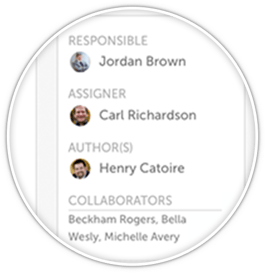 Teams
Teams
People collaborate on opportunities for improvement more effectively when using continuous improvement software with improved communication, visibility, and accountability. All tasks and updates are stored in each improvement so that nothing falls through the cracks and no time is wasted in email.
Continuous improvement software makes it possible for dispersed teams to work on opportunities together with a single source for all improvement information, synced digital improvement boards, and Huddles.
- Smart Notifications
Continuous improvement software sends the right information to the right people at the right time so that everyone stays apprised of what they're supposed to be working on, important dates, missed deadlines, and updates. These smart notifications are timely and customizable so that everyone gets the information they need.
- Boards
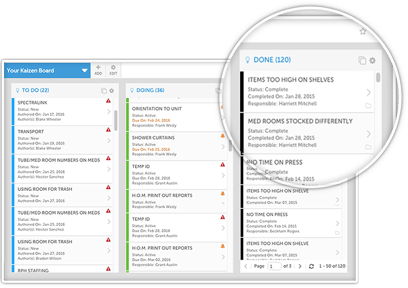 Customizable boards give everyone in your organization a unique view that details what they need to know at any given time. Boards can be as basic as displaying your current improvements and tasks, or as detailed as showing the relationships between projects, events, improvements, and key metrics.
Customizable boards give everyone in your organization a unique view that details what they need to know at any given time. Boards can be as basic as displaying your current improvements and tasks, or as detailed as showing the relationships between projects, events, improvements, and key metrics.
Improvement coaches can view opportunities and boards from across the organization from their desks, using that information to decide what areas they should visit next. With digital boards that update in real time, are visible from anywhere, and can be displayed in the same places your physical boards are now, the opportunity for spreading improvement is endless.
- Charts and Data
Continuous improvement software lets you track the data you're trying to improve right alongside the improvement work itself so that everyone can see the progress made by the team and the impact on key metrics. For example, Pareto Charts and Run Charts can be logged with improvements, projects, or as stand-alone metrics.
- Reports
Understanding your activity, engagement, and impact metrics is vital to maintaining a healthy improvement culture. With detailed reports that give an overview of the entire organization and drill down to a granular level, it's possible to see what areas are performing well, which need additional coaching, potential bottlenecks to the improvement process, and who deserves recognition for outstanding participation.
Calculating these numbers and drawing up reports takes most improvement leaders a significant amount of time. Continuous improvement software tracks all of it for you so that reports are ready when you need them. Share them with your leadership team to show progress toward achieving strategic goals, and with employees to increase engagement.
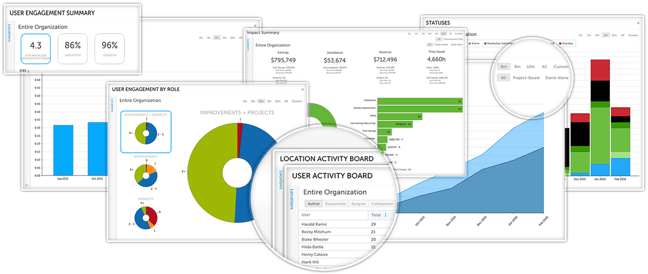
- Search
Continuous improvement software creates a permanent knowledge repository that's accessible to everyone at any time. Before people submit improvements, they're able to do a quick search to find out if someone else has already solved (or is currently solving) their problem so that they don't have to reinvent the wheel. Leaders can use advanced search filters to identify the improvements that matter to them.
Continuous improvement software takes the record of improvement that you have hiding in spreadsheets and filing cabinets and puts it out in the light where people can actually find and use it.
Learn more about continuous improvement software in this free eBook:
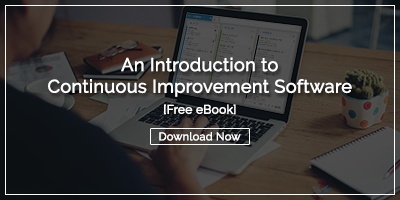

 Teams
Teams Customizable boards give everyone in your organization a unique view that details what they need to know at any given time. Boards can be as basic as displaying your current improvements and tasks, or as detailed as showing the relationships between projects, events, improvements, and key metrics.
Customizable boards give everyone in your organization a unique view that details what they need to know at any given time. Boards can be as basic as displaying your current improvements and tasks, or as detailed as showing the relationships between projects, events, improvements, and key metrics.